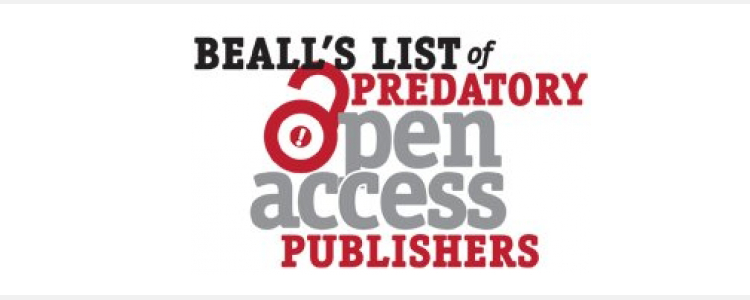Uncovering the Real Reasons Behind Beall’s Predatory Journals List Disappearing

Deciding where to publish your research is already tough enough. Even worse, some journals out there simply seek to make money off researchers by offering to publish their manuscripts with minimal scrutiny. These predatory journals often compel authors to pay huge fees to publish a paper that often isn’t thoroughly peer reviewed. The rise of these journals was believed to have grown out of the open access movement. Nonetheless, it has been carefully tracked by Jeffrey Beall since 2008.
Beall, who had been curating a list of predatory journals, suddenly and without warning pulled the plug on his blacklist of predatory journals. For a long period of time, there was rampant speculation in the academic community regarding why he took this list down. Now, in a recent opinion article in Biochemica Medica, Beall finally revealed his motivations for taking down the website.
Reasons Behind the Story
As a brief history, journal subscription prices grew rapidly in the 1990s due to weak North American currencies and the development of niche research fields. Due to the widespread blame on publishers, there was a rapid rise in online open access journals that would charge authors in exchange for free access to manuscripts. Beall first noticed this author pay model in 2008-2009, when he was constantly solicited by “broad-scoped, newly-launched” journals. These journals offered to publish anything, for a fee. Beall curated a list of such journals and this list was published online. His list served as an important guide for many researchers to discern good quality journals from those that are simply trying to make money.
As a result, publishers of these predatory journals began attempting various methods to be removed from these lists. Aggressive publishers began flooding the emails and mailboxes of administrators and officials at Colorado University at Denver. In choosing this institution, they targeted those who would have the authority to veto the work of Beall. Ultimately, this strategy sought to irritate university officials so much that they’d simply tell Beall to take down the list. Even worse, scientists who were publishing in these journals also began defending them, likely because they’d publish their papers without rigorous peer review. Ultimately, the list was taken down after administrators had heard enough from these blacklisted journals.
What Does This All Mean?
Academia, for all its ivory tower prestige, has changed rapidly in the previous few decades. Indeed, in his paper, Beall highlights an important problem with academia in the United States. Namely, as universities privatize and focus on profits, they only want positive news coming out of their doors. The public relations teams at these corporation-like universities seek to avoid having negative things, like blacklists, associated with them so that they can more effectively appeal to students.
Ultimately, these publishers and journals threaten science because they publish data that has not been thoroughly reviewed by peers. Moreover, they allow scientists who are not competitive enough to publish in journals that do not have enough rigor to fully test the quality of the manuscripts. In this way, predatory journals and predatory publishers have usurped the true purpose of manuscript publishing to simply generate profit and advance careers. As Jeffrey Beall experienced first-hand, nothing is immune from the greed of a few.







